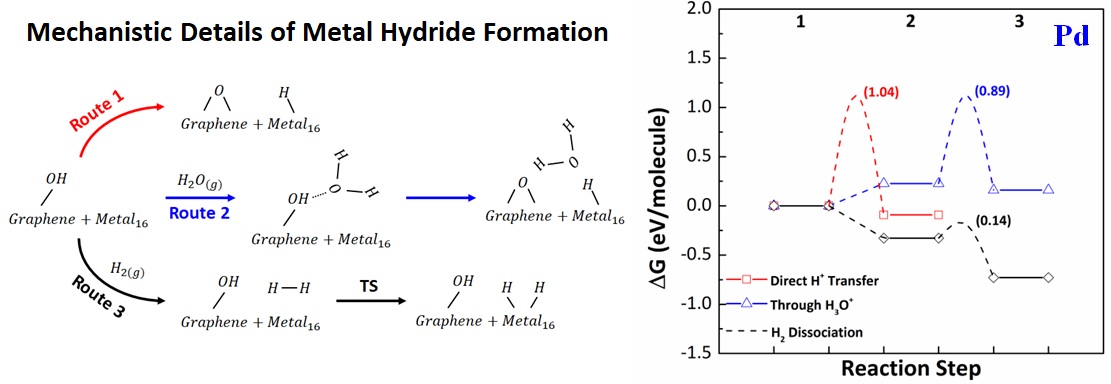Graphene and graphene-based materials have gained considerable interest due to their unique electronic, thermal, and mechanical performance. The functionalization of these systems has already been applied in fuel cells, energy storage, and wastewater remediation. However, understanding the interaction between metal nanostructures and graphene remains crucial to fully utilize the properties of graphene-based materials. In this study, we explored multiple reduction pathways of noble metal clusters (consisting of 16 metal atoms) supported on graphene oxide surface during chemical reduction. Density functional theory (DFT) calculations and
ab initio molecular dynamic (AIMD) simulations were conducted in combination with experimental Fourier transform infrared (FT-IR) and X-ray diffraction analysis (XRD) measurements for understanding the surface characteristics of graphene-supported metal nanostructures.
Vibrational density of states (VDOS) was collected through simulating AIMD trajectories to study the critical surface chemistry features, including O-H stretching region at 3200-4000 cm-1, presented in the experimental FT-IR spectra over the graphene oxide surface. An absence of hydride phase is also shown on Au cluster compared to Pd and Pt clusters from the XRD profiles. Thus, three mechanistic pathways were evaluated (in terms of DFT-based Gibbs free energy) for hydride formation on the surface of Au, Pd, and Pt clusters: 1) direct transfer of H+ from the surface OH group, 2) H3O+-mediated H+ transfer, and 3) transfer of H+ through H2 dissociation. We found that the hydride formation over supported metal clusters is thermodynamically and kinetically driven through the dissociation of H2 molecule on the metal surface, with Au being resistant to such reduction mechanisms. Overall, our results show that a different level of hydride formation and its effects on the catalytic activities is expected with graphene oxide surface decorated with various metals.


